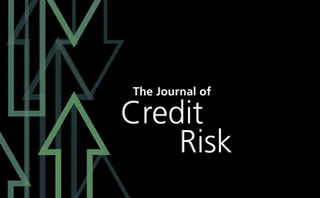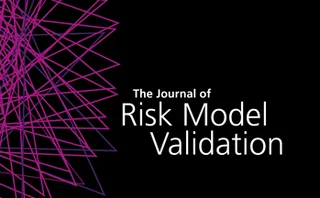Technical paper/Credit scoring
Shapley values as an interpretability technique in credit scoring
The authors analyze the usefulness of the Shapley value as a machine learning interpretability technique in credit scoring.
Banking on personality: psychometrics and consumer creditworthiness
Calibration alternatives to logistic regression and their potential for transferring the statistical dispersion of discriminatory power into uncertainties in probabilities of default
Performance validation of representative sample-balancing methods in loan credit-scoring scenarios
An end-to-end deep learning approach to credit scoring using CNN + XGBoost on transaction data
The authors find that machine learning methods can generate satisfactorily performing credit score models based on data from the 90-days prior to the score date, where traditional models can perform poorly.
A survey of machine learning in credit risk
This paper surveys the impressively broad range of machine learning methods and application areas for credit risk.
Review of credit risk and credit scoring models based on computing paradigms in financial institutions
This paper provides an overview of some prominent credit scoring models used in financial institutions and provides an insight into how the use and integration of popular computing paradigms based on NNs, machine learning, game theory and BDA in credit…
What can we learn from what a machine has learned? Interpreting credit risk machine learning models
This paper studies a few popular machine learning models using LendingClub loan data, and judges these on performance and interpretability
Ensemble methods for credit scoring of Chinese peer-to-peer loans
This study aims to conduct credit scoring by focusing on a Chinese P2P lending platform and selecting the optimal subset of features in order to find the best overall ensemble model.
Bifractal receiver operating characteristic curves: a formula for generating receiver operating characteristic curves in credit-scoring contexts
This paper formulates a mathematical model for generating receiver operating characteristic (ROC) curves without underlying data.
How accurate is the accuracy ratio in credit risk model validation?
The author presents four methods to estimate the sample variance of the accuracy ratio and the area under the curve.
The effects of customer segmentation, borrower behaviors and analytical methods on the performance of credit scoring models in the agribusiness sector
The main aim of this study is to analyze the joint effects of customer segmentation, borrower characteristics and modeling techniques on the classification accuracy of a scoring model for agribusinesses.
A statistical technique to enhance application scorecard monitoring
Application scoring plays a critical role in determining the future quality of a lender’s book. It is therefore important to monitor the performance of an application scorecard to ensure it performs as expected.
Default contagion among credit modalities: evidence from Brazilian data
The aim of this paper is to assess the impact of defaulting on one personal credit modality on future defaults on other modalities. Using Brazilian microdata, the authors run a logistic regression to estimate the probability of default on a given credit…
Nonlinear relationships in a logistic model of default for a high-default installment portfolio
This paper uses data on consumer credit along with generalized additive models to analyze nonlinear relationships and their effect on predicting the probability of default in the context of consumer credit scoring.
Modeling corporate customers’ credit risk considering the ensemble approaches in multiclass classification: evidence from Iranian corporate credits
This paper introduces a model which enables lenders to develop specific policies for credit granting by predicting the solvency and insolvency rates of their corporate clients.
Dynamic credit score modeling with short-term and long-term memories: the case of Freddie Mac’s database
This paper investigates the two mechanisms of memory, short-term memory and long-term memory, in the context of credit risk assessment.
Are all collections equal? The case of medical debt
This paper examines the predictive value of medical collections in assessing consumer creditworthiness with credit scoring models.
Default predictors in credit scoring: evidence from France’s retail banking institution
This paper presents the set-up of a behavioral credit-scoring model, and estimates such a model using an auto loan data set of one of the largest multinational financial institutions based in France.


